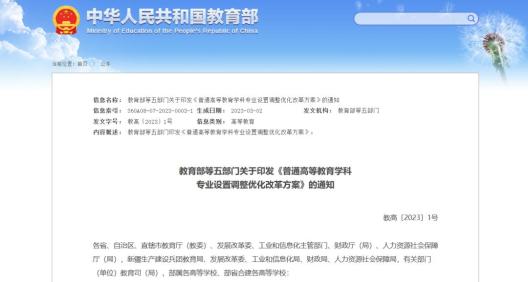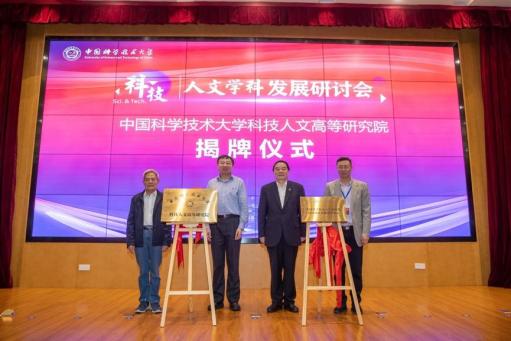Ten highlights of Labor Contract Law show the legislative direction of "people-oriented"

BEIJING, Jan. 10 (Xinhua)-Hong Kong Ta Kung Pao published a commentary entitled "Ten Highlights of the Labor Contract Law" on Jan. 10, saying that China’s Labor Contract Law unified enterprises and workers in the spirit of "law". "Labor Contract Law" highlights the legislative direction of "people-oriented", which is the embodiment of socialist legislative principles and a new milestone in the legal construction of labor and social security in China.
The original extract of the article is as follows:
The Labor Contract Law came into effect on January 1, 2008. This is another milestone in the legal construction of labor and social security in China since the Labor Law. This law highlights the concept of "people-oriented" and embodies the legislative direction of Socialism with Chinese characteristics.
The author believes that the Labor Contract Law has 10 highlights in people-oriented:
Highlight people-oriented
Highlight 1: There are new regulations on "probation period". Clearly defined the "probation period", "minimum wage level" and "not arbitrarily dismissing probationary workers", and blocked the legal loopholes in the Labor Law.
Highlight 2: "One sign a year" is restricted. It is stipulated that "if a fixed-term labor contract is concluded twice in a row, an open-ended labor contract should be concluded", and "when the contract is terminated, the employer should pay economic compensation to the laborer according to the standard of one month per year, with a maximum of 12 months", which limits the short-term contract of "signing once a year".
Highlight 3: "Labor dispatch" has laws to follow. It is stipulated that "the employing unit shall not set up a labor dispatch unit to dispatch workers to its own unit or subordinate unit" and "the labor dispatch unit shall pay monthly remuneration to the dispatched workers according to the minimum wage standard stipulated by the local people’s government during the period when they are not working", etc., to limit the phenomenon of abuse of labor dispatch by the employing unit.
Highlight 4: "Contract termination" should be compensated. It is stipulated that "unless the laborer is unwilling to renew the labor contract, the employer must give the employee economic compensation", and "the employer is unwilling to renew the contract and needs compensation at the expiration of the contract; The employer shall terminate the contract in violation of the law in double indemnity ". Ending the history that employers don’t have to give employees any economic compensation after the expiration of fixed contracts.
Highlight 5: "Arrears of wages" plus compensation. It is stipulated that "if the employer is in arrears or fails to pay the labor remuneration in full, the laborer may apply to the local people’s court for a payment order according to law, and the people’s court shall issue a payment order according to law", and "the employer shall pay additional compensation at a standard of 50% to 100% of the payable amount." This is a heavy hammer to the phenomenon of unpaid wages.
Highlight 6: The "written contract" must be concluded within one month. It is stipulated that "if a written labor contract has not been concluded with the employee after one year from the date of employment, in addition to paying twice the salary in accordance with the above provisions, it shall also be regarded as having concluded an open-ended labor contract with the employee". Increased the legal responsibility for not signing a written labor contract.
Highlight 7: "Illegal layoffs" should bear the responsibility. It is stipulated that "when retrenching personnel, priority should be given to retaining the following personnel: those who enter into fixed-term labor contracts with a longer term; Concluding an open-ended labor contract; There are no other employees in the family, and there are elderly people or minors who need to be supported. Otherwise, they will bear legal responsibility.
Highlight 8: "Occupational hazards" must be specified in advance. It is clearly required that "occupational hazards" and "protective measures" should be clearly stated in the labor contract.
Highlight 9: Prevent "useless" workers. It is stipulated that "the salary of a worker during the probation period shall not be lower than 80% of the lowest salary of the same position in the unit or the salary agreed in the labor contract, and it is emphasized that the salary during the probation period shall not be lower than the minimum wage standard where the employer is located".
Highlight 10: "freedom of choosing a job" liquidated damages. The labor contract can be "agreed to keep the business secrets of the employer and confidential matters related to intellectual property rights". The employer shall give economic compensation to the workers on a monthly basis during the period of non-competition. Workers who violate the non-competition agreement shall pay liquidated damages to the employer as agreed.
The law has also caused controversy, with three main focuses:
The first is "increased labor costs". Many enterprises are worried that labor costs will be greatly increased. Xin Chunying, deputy director of the NPC Law Committee, believes that "after careful calculation, the labor cost of law-abiding enterprises will not increase" and "returning the low wage level to a reasonable level will help promote industrial upgrading". The second is to "rebuild the iron rice bowl." This is also a traditional one-sided understanding, because the law also stipulates that "an enterprise can dismiss its employees". For example, in addition to the dismissal reasons such as "being investigated for criminal responsibility according to law", the contract can be terminated at any time for "the employee seriously violates labor discipline or the rules and regulations of the employer", "has a serious impact on the completion of the work tasks of the unit, or refuses to correct after being put forward by the employer". This is the legal protection of the "autonomy" of enterprises in labor and employment. The third is "whose interests should the law protect". Many business people believe that the law "favors workers and harms the interests of enterprises". Many foreign-funded institutions (such as the European Union Chamber of Commerce in China and the American Chamber of Commerce) have proposed that "the implementation of laws that excessively protect the rights and interests of workers will have a negative impact on the investment environment in China".
The author thinks that the one-sided understanding of the Labor Contract Law is caused by the long-term insufficient protection of workers’ rights and interests, taking unreasonable labor relations as a matter of course, or ignoring the disadvantaged groups. In essence, the law is intended to protect the legitimate rights and interests of both parties, not to harm the interests of enterprises.
Whether people-oriented or capital-oriented is the direction of socialist legislation. A few days ago, the research results of 24 experts and scholars, which lasted more than one year ―― The Current Situation of Employment Discrimination in China and Anti-discrimination Countermeasures ―― and Overseas Anti-employment Discrimination System and Practice came out, which is the largest and most authoritative research in the theory and practice of anti-employment discrimination in China. A total of 3,454 questionnaires in 10 major cities, including Beijing, Guangzhou, Nanjing, Wuhan, Shenyang, Xi ‘an, Chengdu, Zhengzhou, Yinchuan and Qingdao, show that the phenomenon of employment discrimination in China is serious: 85.5% think it is "discriminatory" and 50.8% think it is "very serious" and "relatively serious". Yang Jingyu, director of the NPC Law Committee, said that the new law "is the need to improve the labor legal system in China. Balancing labor relations and protecting the legitimate rights and interests of workers have always been the principle that China labor legislation must follow. ". Sun Baoshu, vice minister of the Ministry of Labor and Social Security, believes that "on the basis of respecting the employer’s autonomy in employment, it is stipulated that labor contracts must be concluded with workers" in order to "effectively protect the legitimate rights and interests of workers".
The author thinks that "Labor Contract Law" unifies enterprises and workers in the spirit of "law". Emphasizing the protection of the legitimate rights and interests of workers is the general principle of international labor legislation; Putting people first is the sublimation of "the guiding ideology of legislation". From the Labor Law to the Trade Union Law, from the Employment Promotion Law to the Labor Dispute Mediation and Arbitration Law … The rule of law in China’s labor system is constantly maturing. "Labor Contract Law" highlights the legislative direction of "people-oriented", which is the embodiment of socialist legislative principles and a new milestone in the legal construction of labor and social security in China. (Chen Qun)
Editor: Wang Yuxi






